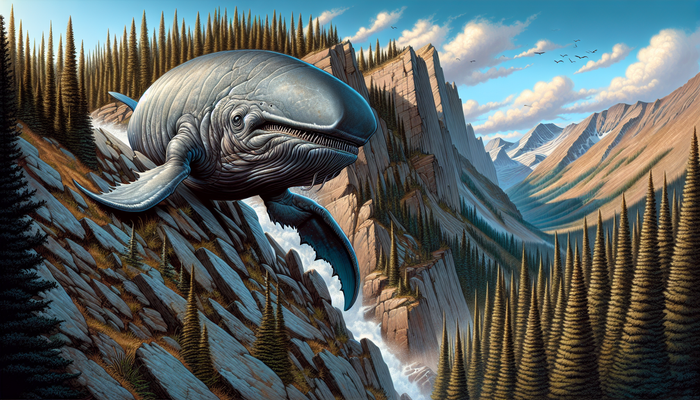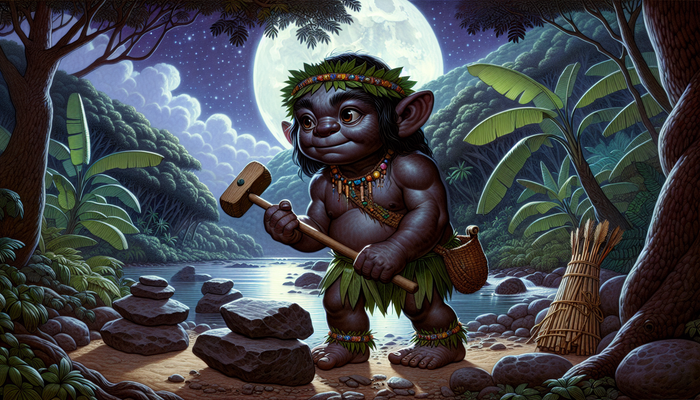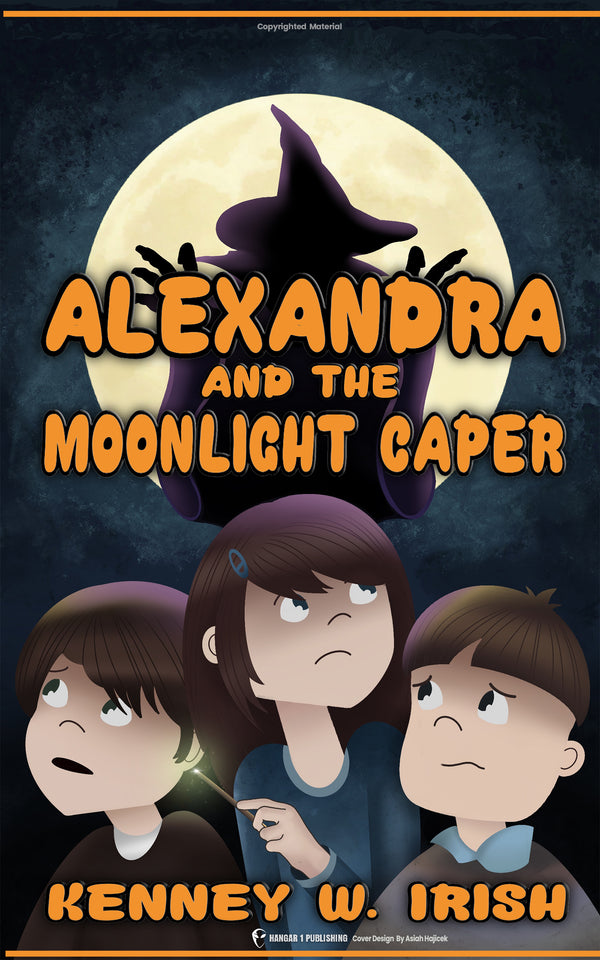What Do Skinwalkers Really Look Like?

Lucas Jennings, Cryptozoologist and Adventurous Naturalist
The Mysterious Skinwalker
Imagine a creature that can transform into any animal, lurking in the shadows of the American Southwest. This mystical being is known as the "skinwalker," a central figure in Navajo folklore shrouded in mystery and fear. As a cryptozoologist fascinated by the fringes of natural science, I have long been captivated by the enigma of the skinwalker. What does this elusive shapeshifter look like? That question has consumed the imagination of many who dare to delve into the unknown.
The Origins of Skinwalkers
In the Navajo language, the term "yee naaldlooshii" translates to "with it, he goes on all fours" and refers to the skinwalker. These beings are considered malevolent witches with the ability to transform into, possess, or disguise themselves as animals. The lore surrounding skinwalkers is an integral part of Navajo culture, often conveyed through cautionary tales to reinforce values and warn against transgressions.
Within Navajo society, skinwalkers represent the antithesis to cultural harmony and balance. While healers are known as "medicine men" or "medicine women," skinwalkers are seen as practitioners of evil magic, engaging in twisted ceremonies and wielding their powers for nefarious purposes. Due to the cultural significance and sensitivity around skinwalkers, their legends are not openly discussed outside of Navajo communities.
As an outsider exploring these beliefs, I aim to recount the folklore around skinwalkers with respect and accuracy. My goal is to educate readers about this captivating subject while honoring indigenous traditions. The enigma of the skinwalker has universal appeal precisely because it dwells in the liminal space between reality and imagination.
The Appearance of Skinwalkers
According to various accounts, skinwalkers are most frequently seen as coyotes, wolves, foxes, eagles, owls, or crows. It is said that skinwalkers wear the pelt of the animal they wish to transform into. However, some stories describe them as creatures bearing both human and animal features simultaneously.
In human form, skinwalkers are reported to have glowing red eyes and animalistic qualities barely concealed behind a human face. Some believe that by locking eyes with a skinwalker, one can become possessed and controlled by them. Among the Navajo, maintaining harmony and balance with nature, known as "hozho," is crucial for well-being. The skinwalker represents a deviation from hozho into unnatural and dangerous territory.
As a zoologist, I am fascinated by the cryptozoological possibilities of a creature that can morph between human and animal forms. But I also recognize that the skinwalker is more than a biological curiosity - it inhabits a spiritual realm beyond scientific understanding. To fully appreciate their mystery, we must explore skinwalkers through the lens of Navajo traditions.
The Powers and Abilities of Skinwalkers
According to legend, skinwalkers possess an array of supernatural powers. Their abilities range from shapeshifting into any animal, to mind reading, controlling animals at night, and even reanimating the dead. It is said that their speed and agility in animal form is unmatched, making them nearly impossible to capture once transformed.
Some accounts suggest that skinwalkers can create a powder from the bones of infants that can be used to curse and inflict lethal harm on victims. While these claims evade scientific explanation, they underscore the sinister aura that surrounds skinwalkers in Navajo culture.
As a cryptozoologist, I cannot easily dismiss notions that defy conventional science. An open mind is essential in my field. At the same time, I aim to approach such fantastic accounts with discernment. My goal is to illuminate the facts behind the folklore, wherever that path may lead.
Encounters and Evidence
There is no shortage of chilling anecdotal accounts of skinwalker encounters. Navajo oral traditions portray them as deceitful tricksters who can mimic familiar voices to lure victims. Some stories describe skinwalkers terrorizing families by scratching on doors and walls, peering through windows, and leaving animal carcasses on properties.
Sightings are frequently reported in or near Navajo Nation lands. However, physical evidence remains elusive. Without material proof, skepticism around skinwalkers is inevitable. But for the Navajo, the cultural imprint of skinwalkers does not require empirical verification. Their menacing presence serves as a cautionary tale, warning against the consequences of witchcraft and taboo behaviors.
As an outsider, I seek tangible evidence to understand this phenomenon. But I also recognize the limits of my role. Some mysteries are not mine to solve. My aim is not to dispel the lore around skinwalkers but to illuminate an integral part of Navajo tradition with respect and nuance. The story of the skinwalker belongs first and foremost to the Navajo community.
Skinwalkers in Modern Culture
In recent decades, skinwalkers have gained prominence in pop culture, appearing in movies, TV shows, books, and video games. The portrayal often veers into sensationalism, stripping away the cultural context of these beings. Some depictions perpetuate outdated stereotypes of indigenous people and their beliefs.
The fascination with Skinwalker Ranch, a property in Utah renowned for paranormal activity, has also fueled public interest in skinwalkers. While the legends attached to the ranch are compelling, they risk obscuring the reality of skinwalkers as understood by Navajo people. As with any instance of cultural appropriation, nuance and authenticity are lost when traditions are co-opted by outsiders.
As a non-Native researcher, I aim to discuss skinwalkers in a manner that engages readers while respecting cultural boundaries. My role is to be a bridge between Western science and indigenous knowledge systems, facilitating understanding while challenging assumptions. I believe cryptozoology has much to gain from collaborating with Native communities as equals to advance our collective knowledge.
The Debate Over Skinwalkers' Existence
The question of whether skinwalkers genuinely exist tends to fall along predictable lines. Skeptics dismiss accounts as superstition or delusion. Believers point to anecdotal stories and the cultural legacy as proof. Theories attempting to explain skinwalker phenomena range from the extraterrestrial to the interdimensional. Some even posit that geophysical processes could induce hallucinations.
Debating skinwalkers' literal existence misses the deeper meaning they hold as symbols in Navajo culture. Their purpose is not to be proven or disproven. Skinwalkers represent the unknown, reminding us that there are forces beyond our control or comprehension. They underscore the fine line between the physical and spiritual realms.
Ultimately, the skinwalker endures as a cultural touchstone that defies simple explanation. To fully engage with the mystery, we must balance curiosity with respect, skepticism with open-mindedness. As an outsider, I cannot define the reality of skinwalkers. But I can appreciate the significance of the unknown and our universal need to make sense of forces greater than ourselves. The story is not mine to shape, only to hear with humility.
In Conclusion
The skinwalker remains an enigmatic and culturally important figure, embodying mankind's eternal fascination with forces that evade understanding. As researchers, we are drawn to mysteries that dwell just beyond the boundaries of accepted science and conventional wisdom. Striking the right balance between healthy curiosity and cultural sensitivity is an ongoing journey.
In exploring a subject like skinwalkers, we must acknowledge the limits of our role as outsiders while honoring traditions that hold deeper resonance for others. My aim is to be a student, not an authority. Our collective knowledge is advanced by uplifting diverse voices and bridging divides. Perhaps in listening closely, we inch closer to truths that defy categorization. The unseen world still holds endless revelations, if only we open our minds to imagine the possibilities.
I invite readers to share their own thoughts and experiences related to this fascinating subject. Let us engage in respectful dialogue that transcends barriers and brings us together in awe of the unknown. Understanding begins with an open heart, a willingness to listen, and the knowledge that none of us alone hold all the answers. The story continues, awaiting new voices.
From Bigfoot to UFOs: Hangar 1 Publishing Has You Covered!
Explore Untold Stories: Venture into the world of UFOs, cryptids, Bigfoot, and beyond. Every story is a journey into the extraordinary.
Immersive Book Technology: Experience real videos, sights, and sounds within our books. Its not just reading; its an adventure.



























